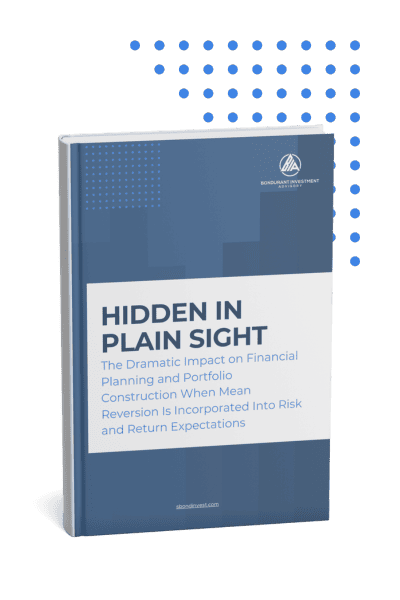The Power of Mean Reversion
Enhance your investment strategy and optimize returns.


What is Mean Reversion?
Mean reversion is a statistical phenomenon suggesting that equity prices revert to their historical average or mean over time. In simpler terms, after experiencing periods of overvaluation or undervaluation, equities tend to move back towards their long-term average. This dynamic presents a unique opportunity for astute investors to capitalize on the cyclical nature of market trends.
At its core, mean reversion involves identifying situations where equity prices deviate significantly from their historical average. Investors can then make strategic decisions based on the expectation that these prices will revert to the mean. This approach is particularly relevant in various financial markets, especially stocks.
how it works
Investment Models & Mean Reversion
Stocks Revert
Prices Can Deviate: Presenting opportunities for investors to capitalize.
Monte Carlo Simulations
Assess Investment Scenarios: Reliance on historical data assumptions and potential inaccuracies.
Incorporating Mean Reversion
Identifying Opportunities: Strategic decisions based on the expectation of a return to the mean.
Block Bootstrap
Resampling with Replacements: Assesses the variability and enhances the statistical conclusions.
Advantages of Incorporating Mean Reversion in Your Investment Strategy
Risk
Mitigation
Mean reversion can act as a risk management tool by identifying potential extremes in asset prices. Investors can make informed decisions to rebalance their portfolios when prices deviate significantly from historical norms, reducing exposure to overvalued or undervalued assets.
Alpha Generating Opportunities
By recognizing the cyclical nature of asset prices, mean reversion allows investors to identify attractive entry and exit points. This information can lead to more strategic buying during undervalued periods and selling during overvalued periods, potentially enhancing overall portfolio performance.
Diversification Benefits
Mean reversion complements traditional investment strategies, providing an additional layer of diversification. This approach allows investors to capitalize on market inefficiencies and trends other market participants may overlook.
Long-Term Value Creation
A mean reversion strategy aligns with a patient, long-term investment approach. Instead of chasing short-term market trends, investors can focus on the fundamental value of assets, contributing to sustained and consistent returns over time.
Traditional vs. Mean Reversion-Incorporated Models
In the world of investment strategies, the choice between traditional and mean reversion-incorporated models can shape your financial journey. Below, we explore key distinctions between the two.
Traditional Investment Strategies
Randomness Assumption
Traditional models often assume that the movement of stock prices follows a random path, known as the Random Walk theory.
Risk Measurement
Traditional methods typically use the standard deviation of historical returns as a primary measure of risk.
Forecasting Approach
The critical problem with the random walk hypothesis is that it ignores the role of valuations, which create time-varying returns. Forecasting returns do not increase when the market falls or decline when it rises.
Asset Pricing Models
The Capital Asset Pricing Model (CAPM) and other related models use the Random Walk theory to determine the expected return on assets.
Portfolio Construction
Portfolios are often built based on diversification and asset allocation based on the risk profile derived from these flawed models, which do not factor in mean reversion into their long-term expected returns.
Mean Reversion Strategies
Mean Reversion Assumption
This strategy is based on the belief that asset prices and returns eventually move back towards the mean or average.
Risk Measurement
Traditional models underestimate bonds' long-run volatility and overestimate stocks' long-run volatility.
Forecasting Approach
Mean reversion strategies use statistical techniques that consider the historical average return and the likelihood of returns reverting to this average over time.
Asset Pricing Models
Modified versions of traditional asset pricing models that incorporate mean reversion to predict future returns.
Portfolio Construction
When incorporating mean reversion, portfolios can be designed to optimize risk and returns.
Download Our White Paper on Mean Reversion
As you navigate the complex landscape of investment strategies, consider the advantages that mean reversion brings. Whether you’re a seasoned investor or just starting, our team is here to help you integrate mean reversion into a holistic investment strategy tailored to your financial goals and risk tolerance. Learn more by exploring our whitepaper.


Get In Touch
Contact us via email or send a message and tell us more about yourself and your financial goals.
Get In Touch
Contact us via phone or email, or send a message and tell us more about yourself and your financial goals.

